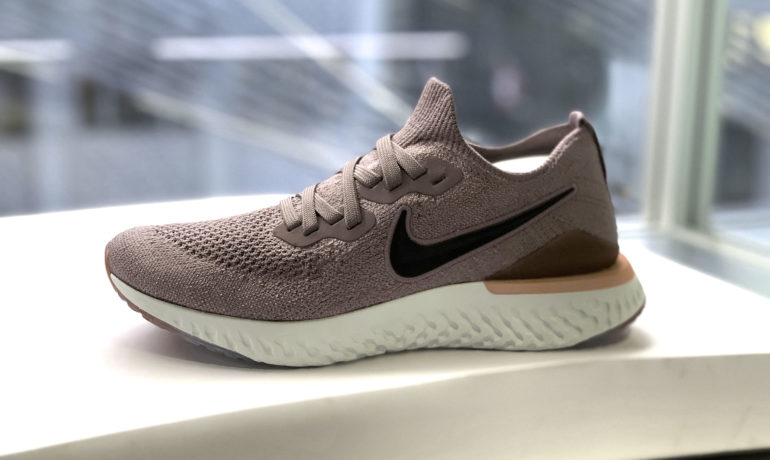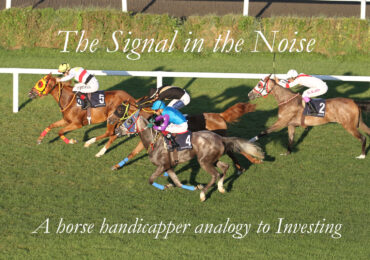Only halfway through the year and what a perplexing ride this has been! Only a few short months ago, we were writing about the markets plunging 10% over anxiety of a Chinese devaluation, only to then rebound shortly thereafter. In even quicker fashion, markets apparently discounted the odds of Britain leaving the European Union (EU) as they heavily sold-off on the news and briefly fled to safety, fearing “Brexit” would have global repercussions. But in what seems to have been the blink of an eye, the S&P 500 index has already rebounded, posting a 2.46% gain in the second quarter[1]. As we pen this letter, the index is posting fresh records as it pushes to new all-time highs. Ironically, these are records that one might have expected to witness if there had been no Brexit. These recent surprises continue to validate our stance that stock market prices are inherently unpredictable in the short run, even if, like Marty McFly from the “Back to the Future” movies, you possessed the ability to view tomorrow’s newspaper.
Whether the market was correct in reacting negatively, or correct in rebounding, is yet to be determined as the long-term implications of Brexit are unpredictable. Even if the U.K. is hurt in the near to medium term, we believe that the initial fears were probably overblown since the U.K. represents 2.4%[2] of the world economy and about 4% of U.S. exports, or about 0.5% of U.S. GDP[3]. Additionally, we believe it’s likely that the U.K. and the EU will seek rational outcomes and negotiate trade agreements that maintain free trade and reasonable levels of travel and migration. In fact, while we don’t necessarily expect this outcome, we wouldn’t be surprised if Brexit actually ends up benefitting both parties in the long run as it’s possible the U.K. enacts policies that are very pro-business and actually induce more corporations to relocate, and the vote may serve as a wake-up call to the EU resulting in economic reforms elsewhere. But, overall, we don’t fret about these affairs too much because we believe we own great, mostly acyclical companies that sell products all over the world.
The knee-jerk reaction in the markets after Brexit is also coming at a time when short-term bonds in France and Italy are in negative territory and Germany has become the first Eurozone nation to sell 10-year bonds at a negative yield, now joining Japan. The less bonds yield around the globe, the more market participants tend to reach for yield in riskier investments such as junk bonds and bonds in emerging market countries. This increased demand drives up these bonds’ prices to levels that we worry leave investors with an inadequate cushion against future defaults, let alone inflation. The search for yield is also causing money to flood into defensive stocks that investors believe can serve as bond substitutes. Utilities are the best example of this phenomenon, as evidenced by their 23.2% YTD[4] return at quarter end, compared to the 3.8% YTD return for the S&P 500.
This recent strong performance of defensive stocks has caused some to ask us if stocks in general, and defensive stocks in particular, are in a bubble. On the surface, stocks do appear relatively expensive, with the S&P 500 currently trading at the historically rich price of approximately 20x earnings, and they are potentially even more expensive than they first appear because profit margins might be stretched (if the business cycle turns down, or historically low interest rates and taxes creep up). In fact, one might think we must be in a bigger bubble than the “Nifty Fifty” era of 1972 because, back then, the S&P 500 had a slightly lower P/E ratio of around 19x earnings. However, when you look under the hood, in 1972, blue chip stocks such as McDonald’s, Disney, and Johnson & Johnson sported P/E ratios of 86, 82, and 62[5], respectively, compared to 23, 18, and 23 today. Also, consider that, in 1972, the long bond was competitively priced with a yield over 6% compared to an earnings yield of roughly 5.25% on the broad market (the inverse of the 19x P/E ratio). Recently, the 10-year U.S. treasury recently touched 1.34% (currently at 1.56%), making the broad market look relatively inexpensive with an earnings yield near 5%. We are certainly not claiming stocks are cheap, particularly not on an absolute basis, as we believe they are priced to deliver returns far below what investors have experienced in the past. But neither are we calling a market top as we recognize these lower returns may still be acceptable to the average market participant given the alternatives. Regardless, the good news is that we’ve learned we don’t need to accurately predict the direction of the market in order to experience healthy returns. All we need to do is identify companies that have favorable long-term economics and then wait patiently to own them when they are being offered in the market at reasonable prices. We believe we’ve identified a solid candidate in one of the most recent additions to our portfolio, the athletic shoe company Nike (NKE).
Nike
Since most investors are impatient with greedy aspirations, market inefficiencies are often found among businesses with predictably favorable long-term economics but soured short-run prospects. Let’s see how Nike fits into these two concepts.
We believe athleisure is in a secular uptrend. All species are wired to survive, and so, as a society, we value fitness as it leads to longevity. This basic need, combined with both population growth and the increasing discretionary time and income available as humanity gets wealthier, has caused a trend towards increased participation in sports and fitness, which in turn leads to a positive growth trend in the sale of athletic clothing and equipment. Nike dominates the space with leading market share in various categories such as sportswear ($7.5 billion in annual sales), running ($5.0 billion), basketball ($4.1 billion), and men’s and women’s training ($4.0 billion), selling products in footwear (65% of revenue), apparel (30%), and equipment (5%). Their sheer size provides them with bargaining power over retailers who depend upon volume and need Nike products to drive store traffic, entrenching them in global supply chains and further deepening their scale advantages. They are also diversified across several different geographies with over half of their revenues spread outside of North America.
Despite Nike’s massive size, they have been able to compound top line sales at an 8% per year clip over the past decade. We believe Nike has driven this growth through the aforementioned secular uptrend in athletic participation, international expansion, and pricing power as a result of Nike’s association with the best athletes and sports teams, and we believe these structural growth drivers are likely to remain in place for the foreseeable future.
Nike possesses a long runway for high growth in emerging markets. Nowhere is this bright future more apparent than in China, where they’re already the leader with nearly $3.8 billion in annual revenue (12% of revenues) growing at 27% excluding currency changes. Furthermore, the business they conduct in China has higher margins of 36% compared to the entire Nike brand average of 26%. Other emerging market exposure isn’t too shabby either, with another 12% of sales growing at 13% with margins already roughly the corporate average and likely improving. With a quarter of their revenue growing at high double digit rates and much of this revenue in higher margin businesses, their margins are likely to continue expanding, which would cause earnings to grow faster than sales.
We frequently discuss our desire to own businesses that participate in inflationary rather than deflationary categories such as selling computers and TVs. Often times, this is found among goods that convey social status, such as in our holding of luxury jewelry maker, Richemont, with their famed Cartier and Van Cleef & Arpels brands. As global wealth increases, discretionary income increases, allowing pricing power as consumers with insatiable appetites spend more dollars on luxury goods to try and prove they have the ability to command more resources than their neighbors. In many ways, Nike has become a luxury goods business (“Look at my brand new Jordan’s!”), as evidenced by Nike being listed among the most counterfeited brands in the world[6], right alongside other luxury goods makers. Even better, unlike Richemont and most other traditional luxury goods companies, Nike has a short-term repurchase cycle, allowing the company to have more of an “evergreen” cash flow component. One other interesting implication of the heavy counterfeiting of Nike products is the insight it gives into the true demand for the brand. One can only imagine how much business might increase if Nike management is able to address the counterfeiting issue. Hopefully, new innovative technologies like Flyknit, self-lacing shoes, or simply just having more personal customization will make counterfeiting more difficult.
This desire for personal customization also helps insulate Nike from the threat of Amazon. First off, Nike’s own online sales are growing quickly (up 51% over the past year) due to the desire to get hot, new, customizable products (which is surely a higher margin business by cutting out the middleman). This also means consumers are seeking out specific merchandise, distinguished from having product passively “pushed” onto them. And in the unlikely event that Nike did decide to offer customization through Amazon, they would likely control the negotiations in that relationship.
As is often the case with such dominant, high return on capital businesses, Nike generates excess cash flow in droves, creating a net cash position on the balance sheet and a consistent return of capital to shareholders in the form of dividends and share repurchases. And yet, at the current price, Nike trades for approximately 22x forward earnings.
If the business is so attractive, why has the stock price come under pressure and the valuation finally become reasonable, particularly relative to its growth prospects? Similar to our investment in Richemont, luxury goods are economically sensitive, and, with much of Nike’s anticipated growth coming from the Asia-Pacific region, Nike will clearly be impacted by the slowdown in China. Additionally, while we still believe athleisure is in a secular uptrend over the long-term, we recognize that activewear sales may be currently experiencing a boom and reaching temporary saturation. But we take heart that only 30% of Nike sales are in apparel, where there is more of a fashion element, and 65% in the more robust footwear category (as opposed to competitor Under Armour where the numbers are nearly reverse, with 71% apparel and 17% footwear).
This fashion element also poses a risk in an industry that faces intense competition with fickle, changing consumer preferences, where competitors such as Under Armour are growing quickly. Fortunately, though, when participating in fitness, people want to associate with high status individuals in that sport. By partnering with the best, Nike’s iconic brands have garnered worldwide recognition and the flagship Nike brand is considered the #1 most popular brand among millennials[7]. We believe Nike can continue to get endorsements from the best because they have the most money to pay celebrity athletes. To put this in perspective, their marketing budget was 10% of sales and nearly $3.3 billion in the fiscal year ended May 31, 2016, larger than Adidas and Under Armour combined. Adidas spent about $2.6 billion or 13.5% of sales, and Under Armour spent $400 million, which was also about 10% of sales. However, in absolute terms, had Under Armour attempted to spend the same total budget as Nike, it would have sapped 80% of sales! True, Nike may miss signing someone like Steph Curry, but, despite this big miss, Nike still dominates the basketball category with 75% of online sales still going to Nike Air Jordan, 14% to Nike Kobe, 6% to Nike LeBron, and only 5% to Under Armour’s Curry.[8]
We think it is irrational to acknowledge the attractiveness of an investment opportunity over the long term but refrain from buying because of short to medium term concerns. As we have outlined, we believe Nike is the juggernaut in a market poised to grow for decades to come in categories that convey social status, thus allowing pricing power over time. At the current price, we are happy to establish a position and would be even happier if it became cheaper so we could scoop up more.
Concluding Remarks
As the stock market continues its seven year bull-run streak since bottoming in March of 2009, we are cognizant that good times such as these cause many to think investing is easy and you need not worry much about risk of loss. In this low interest rate environment, yield starved investors seem to separate fundamentals and valuation and are willing to pay nearly any price for yield. Rest assured, while many of the businesses we own produce dividends, we recognize that not all dividends are created equal as they are simply a derivative of cash flow. Thus, rather than focusing on dividend yields when we analyze businesses, we focus instead on how much cash flow a business currently produces relative to its current price, how robust we believe that cash flow is likely to be to future technological change and economic turbulence, and how fast it is likely grow over time. And while we cannot predict the market direction in the short run (nor are we aware of investors who reliably produce excellent results attempting to do so), if we assess the aforementioned cash flow characteristics correctly, we are confident that the value of our businesses should continue to grow over time. Thus, even if the market gyrates as it stews over China, Brexit, or the timing of the Fed’s next interest rate hike, eventually, we believe this growing value will be recognized…so long as we are patient.
As stewards of your and our families’ capital, we will continue to follow our proven strategy of searching for high risk-adjusted returns among great businesses.
Thank you for your trust and confidence,
The YCG Team
Disclaimer: The specific securities identified and discussed should not be considered a recommendation to purchase or sell any particular security nor were they selected based on profitability. Rather, this commentary is presented solely for the purpose of illustrating YCG’s investment approach. These commentaries contain our views and opinions at the time such commentaries were written and are subject to change thereafter. The securities discussed do not necessarily reflect current recommendations nor do they represent an account’s entire portfolio and in the aggregate may represent only a small percentage of an account’s portfolio holdings. These commentaries may include “forward looking statements” which may or may not be accurate in the long-term. It should not be assumed that any of the securities transactions or holdings discussed were or will prove to be profitable. S&P stands for Standard & Poors. All S&P data is provided “as is.” In no event, shall S&P, its affiliates or any S&P data provider have any liability of any kind in connection with the S&P data. Past performance is no guarantee of future results.
[1] For information on the performance of our separate account composite strategies, please visit www.ycginvestments.com/performance. For information about your specific account performance, please contact us at (512) 505-2347 or email [email protected].
[2] See https://www.quandl.com/collections/economics/gdp-as-share-of-world-gdp-at-ppp-by-country
[4] See Utilities Select Sector SPDR ETF (ticker: XLU) performance at www.sectorspdr.com
[5] See http://brooklyninvestor.blogspot.com/2015/06/in-search-of-stock-market-bubble.html
[6]See http://abcnews.go.com/Business/nike-shoes-counterfeited-goods-world/story?id=38485256
[7] See http://www.businessinsider.com/top-50-millennial-brands-2015-5
[8] See http://seekingalpha.com/news/3186966-nike-takes-armour-nba-finals?source=email_rt_mc_readmore&app=1&uprof=33#email_link




